#Leo Hourvitz
Text
Halloween 2003 at Maxis: The Social Bunny

At the Maxis 2003 Halloween Costume Contest, we were visited by the Social Bunny. In the new version of The Sims, the Social Bunny appears only to those who are in need of extra social, so it's not such a good sign that we could all see it.
Photos courtesy of Komei Harada and Andreas Ramos.

The social bunny hops into the middle of the crowd to begin a few impromptu socials as (L to R) Kelly Riley, Marion Gothier, Kevin Byall, and Emmy Toyonaga watch.

Poor social bunny! Someone has rejected the bunny's social attempts, and now he walks away sad. Who wouldn't want a hug from a soft, fuzzy, ratty, stained, one-eyed bunny? Kevin Byall and Charles London watch this sad sight.
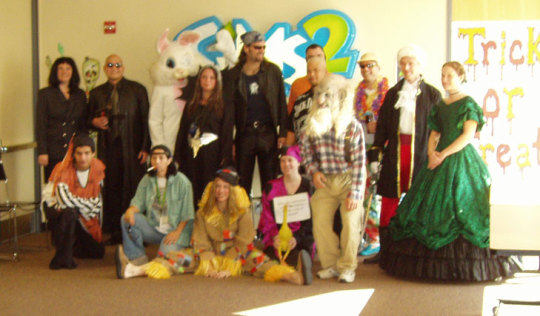
Here's the bunny with a collection of other spirits from the Costume Contest. Back row (L to R): Lisa del Toro, Alvin Go, the Social Bunny, unknown, Justin Graham, BJ West, Cory Tsang, Kevin Byall, David Benson, Wendy Bliss.
Front row: unknown, Suzanne, Jenna Chambers, Gretchen Carlson, unknown.

Whew! After a hard day of spreading sociality everywhere, the bunny waves goodbye.

At right, the bunny takes a well-deserved rest. The bunny learned to respect the entertainers who populate our nations' amusement parks... those heads are hot!

But you can't keep a bunny down for long! Later that night, the bunny popped back up at Patti Wilson's Halloween Party. Patti's friend Naomi looks on as the bunny sees more people in need of social. It's unclear how the bunny's eye returned for this picture, when in fact it was sewn shut until after the evening was over.
-------------------------
Pay attention to the first 2 photos. They have a printed screenshot on the wall that shows a hot tub. But the UI in this screenshot is not from E3 2003, but from earlier builds with Purple UI:
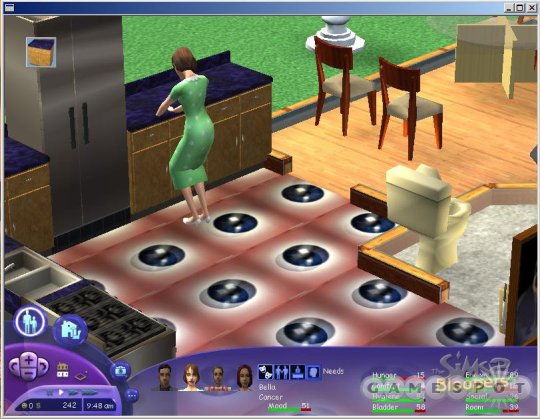

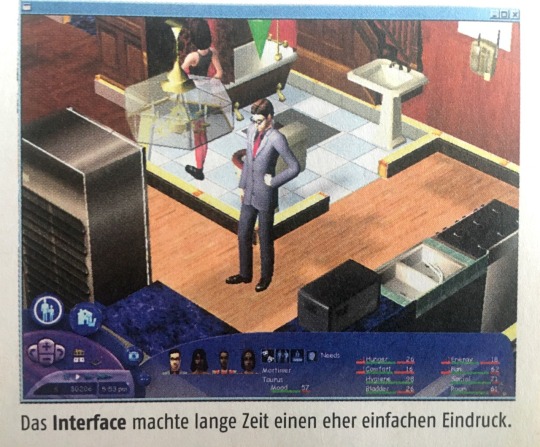

The third photo hanging reference photos to something and to the Marrocan style of objects in game.
#Leo Hourvitz#halloween#2003#maxis#sims 2#sims 2 beta#the sims 2#sims2#social bunny#screenshots#purple ui#Marrocan
121 notes
·
View notes
Text
Strangetown Townies Master Post
I know a lot of people prefer to play the cleaned version of Strangetown... I also know that when I’m using ST as a main hood, I like to have the ST townies as the ‘main’ townies of the hood. So, for convenience, I’ve uploaded all of the Strangetown townies to my dropbox.
Because it would take a gazillion years to pose them all, I’ve just left their portrait picture (ripped from the wiki), their personality/aspiration and a link to download them.
If you want to download them all at once, you can download them from this direct link here.
Without further ado, here are the Strangetown townies...
Adults

Jessica Ebadi - Romance, Libra 2/8/2/6/7

Gerard Landry - Family, Cancer 6/3/6/4/6

Trista Shaw (redhead) - Romance, Taurus 5/5/3/8/4

Quinten McAuley - Fortune, Capricorn 7/4/1/8/5

Crystal Vu - Fortune, Scorpio 6/5/8/3/3

Cooper Olshfski - Romance, Taurus 5/5/3/8/4

Margaret Howe - Fortune, Scorpio 6/5/8/3/3

Johnson Pai - Romance, Taurus 5/5/3/8/4

Renee Andrews - Fortune, Scorpio 6/5/8/3/3

Gary Walton - Family, Cancer 6/3/6/4/6

Katelyn Goss - Romance, Libra 2/8/2/6/7

Matthew Howe - Knowledge, Sagittarius 2/3/9/7/4

Trista Shaw (blonde) - Popularity, Leo 4/10/4/4/3

Abhijeet Cho - Romance, Taurus 5/5/3/8/4

Marion Almassizadeh - Family, Aquarius 4/4/4/7/6

Joel Jeffress - Knowledge, Virgo 9/2/6/3/5

Holly Andersen - Knowledge, Virgo 9/2/6/3/5
Teens

Tina Roennigke - Fortune, Capricorn 7/4/1/8/5

David Gibson - Family, Aquarius 4/4/4/7/6

Barbara Young - Family, Cancer 6/3/6/4/6

Blair Mace - Fortune, Scorpio 6/5/8/3/3

Tiffany Riley - Romance, Libra 2/8/2/6/7

Edward Fuchs - Family, Aquarius 4/4/4/7/6

Kendal Lawson - Fortune, Scorpio 6/5/8/3/3
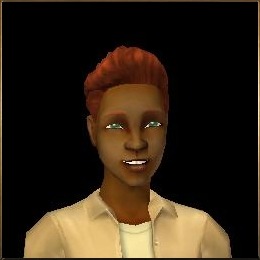
River Smith - Family, Cancer 6/3/6/4/6
Children

Kana Thomason - Grow Up, Leo 4/10/4/4/3

Amin Couderc - Grow Up, Virgo 9/2/6/3/5

Vicki Hourvitz - Grow Up, Aries 5/8/6/3/3

Samuel Riley - Grow Up, Aquarius 4/4/4/7/6

Camryn McGaw - Grow Up, Virgo 9/2/6/3/5
69 notes
·
View notes
Text
Leo Hourvitz's notes from SIGGRAPH 2004 which relates to The Sims and The Sims 2

Summary
This year's themes at SIGGRAPH:
Real-time graphics continues to be a larger and larger part of the conference
People continue to figure out a lot of cool things to do with GPUs
A large number of the high-end production sketches ended up having direct applicability to real-time graphics
Course: The Making of "Lord of the Rings": Massive
This part of the Weta mastercourse covered their crowd animation software, Massive. I had never seen a demo of Massive before, and to me (and most Maxoids in the readership!) the most interesting thing was comparing the way Massive works to the way we use Edith to control virtual characters. Although I hadn't really thought about it beforehand, the problems are remarkably parallel.
Massive is trying to make sure a huge cast of background characters behave in a plausible, but not necessarily completely predictable, way. It incorporated a lot of "sensing" information about what that particular virtual character can see at any time. And like Edith and The Sims, it had a lot of very funny outcomes (the first time they turned it loose on one of the big attack scenes, the outnumbered army turned and ran. Logical, but not very good for the film's script!).
One thing they did that's very applicable to a current tools discussion within Maxis has to do with the separation of animation state versus AI. They had a very complete separation of the animation state editor (where you define what animation states are possible and how to get in between them) from the AI (which spent a lot of time dealing with the sensor loop and what other simulated agents were doing).

A great hack for locomotion they put in to make the giant battle scenes tenable was that they could paint flow fields on the terrain. The massive agents would then flow along the prescribed field unless something dramatic happened nearby (like them getting attacked). This was used for many of the large-scale shots in the second and third films.
If you haven't heard about it, Massive has now been spun out of Weta as a separate company and is selling the software on the open market.
Sketch: Practical Real-Time Hair Rendering and Shading
This sketch from ATI was about how the rendering Ruby's hair in their new "Ruby: The Double-Cross" demo. Frankly, I wasn't super-impressed with the hair in that demo (I think a lot of our Sims 2 hair looks better). The one thing that was kind of nice is the anisotropic hair shader they implemented, but in fact that still had it's limits because it caused them to use overscale hair follicles. Much of their sketch concerned an attempt to resolve polygon ordering; they hadn't thought of using the a-priori poly ordering we use on Sims 2 until the plane ride to the conference!
3 notes
·
View notes
Text
Leo Hourvitz's notes from SIGGRAPH 2003 which relates to The Sims

The highlight of this SIGGRAPH was the technical program -- in particular papers and sketches. The transition of SIGGRAPH from batch-rendering oriented work towards real-time interactive rendering continued -- by far the majority of the papers I went to were research on interactive techniques. The most exciting stuff was in new-model lighting techniques (see Radiance Transfer Papers), but there were also some other great real-time ideas like the real-time soft shadows and the billboard clouds. Below are some links to the things I saw this year.
Paper: Skinning by Example
Alex Mohr and Michael Gleicher (from UWisconsin) wrote a paper about another technique for automatically computing weights for use in a skinning system given a set of example meshes. Like the Multi-Weight Enveloping technique from last year's Symposium on Computer Animation, this system takes a set of example poses for a skin, which can either be sculpted or simply created using a skinning technique that's not suitable for real-time (such as Maya's influence objects, a complex muscle-and-skin dynamics model, etc.), a set of skeleton poses that correspond to those skins, and then calculates a set of rigid bones and skin weights which express that as well as possible.
However, the particular trick this paper uses to get higher-quality results is that the authors automatically add extra joints to every joint in the input skeleton. In particular, they add up to seven extra joints per input joint -- one which splits the rotations on the input joint and six which represent scale transforms in various places around the input joint in order to express muscle bulges. Because it wouldn't be acceptable to have seven times the joints in the output skeleton, the authors manually specify which input joints to add these extra joints to.
The advantage of this paper over the Multi-Weight Enveloping technique from last year is that although they do add joints, their added joints are implemented in exactly the same fashion as any other real-time skinning system, and so can be hardware-accelerated much more easily. Unfortunately, because their system results in a skeleton with a lot of joints, it's not clear that it would actually be hardware-acceleratable on current-generation hardware.
I was initially very excited about this paper, since I think that skinning by example is fundamentally a more efficient technique. However, what this paper really does is allow approximation of other skinning techniques (twists, bends, morphs, influence objects) by extra joints. Therefore, it's only the change of tool that this technique saves you -- you would have to skin your muscle bulge via some other means (e.g., a morph), and this technique would then approximate that morph with 3-5 extra bones. While that could certainly be useful (for instance, in converting a face rigged with morphs to one rigged with bones), I'm not sure the savings in a typical Sims-style body-rigging case would be worth the extra step.
The full title of this paper was "Building Efficient, Accurate Character Skins from Examples", by Alex Mohr and Michael Gleicher from the University of Wisconsin.
2 notes
·
View notes
Text
ACM SIGGRAPH - Leo Hourvitz
http://www.siggraph.org/
ACM SIGGRAPH is the non-profit organization that sponsors the annual SIGGRAPH conference. While I've never been an employee, I've been a volunteer for ACM SIGGRAPH for most of my professional life, including Computer Animation Festival Chair, Panels Chair, Director for Communications, Animation Theater Director, Course Speaker, Course Reviewer, and Sketches Jury Member.
2 notes
·
View notes
Text
Here are a few of the friends I've made at EA - Era 2: EA Partners - Leo Hourvitz
After The Sims 2 PC base game and the first expansion pack, I was looking to try out something different. Inspired by Tom Frisina, the very charismatic head of EA Partners, I transferred into the EA Partners group where I helped evaluate and coach our potential collaborators.

Scott Evans

Scott Testing
2 notes
·
View notes
Text
Here are a few of the friends I've made at EA - Era 1: The Sims 2 PC - Leo Hourvitz
Electronic Arts
Here are some of the friends I made in my five years at Electronic Arts. You'll notice few of the pictures were taken at work!
Era 1: The Sims 2 PC
My first major project at EA was The Sims 2 base game for the PC. At this time, Maxis was in their own location in downtown Walnut Creek, which had the happy result that I could take BART to work.
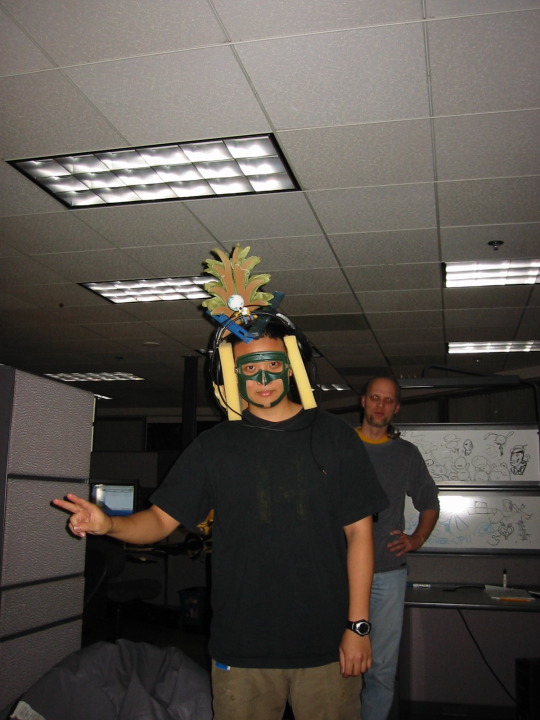

Pao Jitmakusol was famous for his HangBoy figures (right) that he drew on whiteboards in the middle of the night.
You can see lots more hangboys at www.hangboy.com.
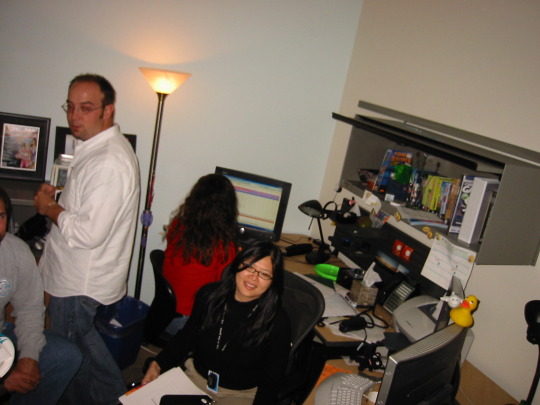
Destry Davison, on Margaret Ng's birthday

MJ Chun and Robi Kauker
4 notes
·
View notes
Text
From resume of Leo Hourvitz, Technical Art Director of The Sims 2
Experience
Technical Art Director, Maxis/Electronic Arts
10/01 to 11/06
Member of concept design team, recruited animation and modeling teams, designed and implemented Maya-based asset pipeline, oversaw character rigging and skinning, designed lighting system, and implemented particle effects for bestselling computer game The Sims 2. Modifed pipeline and designed process to enable effective content outsourcing. Worked with external partners to refne concepts in EA Partners group. Developed next-generation Collada-based pipeline in C# for innovative Wii products.
1 note
·
View note
Text
Some Notes which relates to The Sims 2 from SIGGRAPH 2002 by Leo Hourvitz, Technical Art Director of The Sims 2
SIGGRAPH 2002 Trip Report
Leo Hourvitz, Maxis/EA
Summary
Another, great, exhausting year of SIGGRAPH! As with last year, the most important stuff ultimately had to do with the new programmable shading hardware and especially nVidia's Cg shading language. That will greatly impact the flexibility and creativity we can bring to surfaces as the hardware it's really targeted at (NV3x and the next generation of consoles) takes hold in the market. Overall, this was a slightly smaller show, but in a really nice city, and with a lot of excitement still around.
...
Electronic Arts Art/Tech Meeting
Henry LaBounta from EAC oraganized a about-half-hour meeting amongst art director, tech art directors, and a few render programmers on Thursday to talk about lighting issues across the company. We also touched on a lot of the process and management issues that all teams at Electronic Arts face; those concerns were fairly common across the company.
Unfortunately for Sims2, most of the discussions about environments are about kinds of pre-baked schemes that aren't very applicable to our user-built world. However, the discussions about character lighting are directly applicable, and at the moment the trend is strongly towards using irradiance or lightmap lighting for characters in the console titles. Irradiance has just been implemented for one of the PS2 titles in Vancouver; they reported that the performance is the same as 3 directional lightings + a spec pass.
Bent Normals
Something that could be very relevant to the Sims2. however, was a new idea for how to pre-bake objects in order to produce more surface details -- and it's independent of what light source scheme you eventually use. At each vertex (at each vertex/face if unshared), you shoot out a number of rays from the vertex and intersect them with the object. There are two results of the computation that are stored back into the *normal* at the vertex:
The normal is *shortened* by the percentage of the rays which intersected the object. This creates self-shadowing within the object because the L dot N calculation that lighting typically does will now have a smaller amplitude.
The normal's direction is warped towards the average of the surviving rays. That's because the surface really will only receive light from the surviving directions, and we want to prejudice the lighting calculation towards such normals (obviously, you now have to be careful about back-face culling).
Sometimes this technique does require that you introduce some extra polygons so there are vertices in the right places to have this technique affect them. However, it seems that right now spending a moderate number of extra polygons to get better shading would be a good adaptation to the hardware we'll be running on. This technique was introduced by ILM in their course on RenderMan, but seems to be relatively well-suited for real-time. In particular, the bond racing game has already implemented this idea for pre-calculating lighting effects on their cars.
...
Gaming as the Dominant Medium of the Future Panel
Way back last year at the December WWGC meeting at Maxis, we strategized about getting more EA content into SIGGRAPH, and one of the things we decided to do was put together a panel about the gaming industry. This panel was the result, and ended up having Bob Nicoll from EARS, J.C. Herz from the NY Times, Ken Perlin from NYU, Patrick Gilmore from DreamWorks, Will Wright, and Glenn Entis from EAC on it debating the truth or falsity of the title.
It was done as a cool panel format, where Ken Perlin moderated and immediately began accepting questions from the audience written on 3x5 cards. He arranged and selected from these cards, and peppered the panelists for opinions. He was very good at it, and it kept things lively.
One thing that became evident is that although few of the panelists really attacked the proposition as directly as we hoped -- mostly debating what it meant for a medium to be dominant -- it became clear that the audience who was writing the questions really did accept the proposition as true. This can only be good for EA's stock price.
I took extensive notes from this panel which I can send around under separate cover; here are a few good pull quotes.
"One of the ways to define dominance is, where are the best and the brightest going? There are a lot of shift we see in the cg industry, and we're losing jobs in some areas, we're gaining them in others, and we're seeing a lot of talent going into the games business, and that's one of the things you need to look at" -- J.C. Herz
"One programmer from a leading game company said to me, "We can market to 15-year-old boys really well, because we know how to make these fascinating environments where you meet new creatures under new circumstances, move around them, and kill them. What we don't know how to do is make these fascinating environments where you meet new creatures under new circumstances and make them feel really bad. When we can figure out how to do that, we'll get the other half of the market [women]." -- Ken Perlin
"We did a couple focus groups for SimCity and asked, "How would you feel if we had real businesses in the game, like McDonald's or Burger King?" and they said it would suck. In the next group, without mentioning this, we asked them what new features would be cool, and they said, "Oh, if we had businesses that were really in our city, like McDonald's and Burger King." That's why I don't trust focus groups." -- Will Wright
"Suppose Moore's law really goes on for another fifteen years, what's it all going to be like when we have ridiculously large computational resources and infinite bandwidth to create these interactive entertainment experiences with?" -- moderator
"To run evolution, to have this world that's a blank slate and I get to determine it's fate, and then get to go in and interact with it. To create a world with alien creatures in it, and go in and interact with it." -- Patrick Gilmore's answer to the question. Will showed no reaction at all...
1 note
·
View note